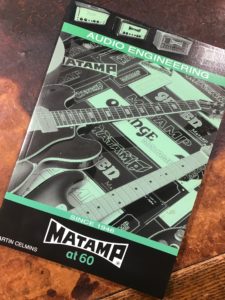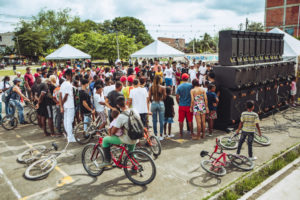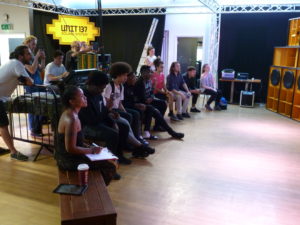SST Research Project 1st Year Report, 2021
Coming to the end of our first year of operations, we thought this was the right time for us to take stock and to provide you – our growing loyal blog readership – with something of an update. Looking back on what we’ve managed to achieve in this first twelve months, overall, we can say we are really quite pleased. Certainly, we can say we’ve laid some very solid foundations on which to build for the next four years.
–
Research Network and Community
One of the most enjoyable aspects of our work in this first year been establishing our links with fellow researchers – some of whom we have been working with Sound System Outernational (SSO) – and building new research relationships around the world. This sets the project on a solid basis for the four more years to come. In this first year we have also concentrated on building our online infrastructure and social media presence. This has been both to make our research accessible and to encourage interest from the wider research community and participants in SST scenes worldwide.
Covid travel restriction have prevented our research abroad this year and has made the traditional fieldwork and in-presence research events impossible. These had been a key part of the original ERC, from which we had to pivot. More to the point, the pandemic has caused restrictions and local curfews on SST sessions, severely limiting kind of pre-pandemic resource opportunities we had envisaged.
Rising to these challenges has emphasised the importance of designing and commissioning our website both to disseminate our research and encourage contacts and contributions. The challenge has also caused us to redesign our research methodologies to involve on-location research agents doing fieldwork under remote supervision. This has helped pursue our commitment to building local capacities.
The SST online sonic map
One of our key research objectives is to generate a sonic map of all the different SST around the world. This will be a first. So, we have been concentrating on this first year is building the online infrastructure and gathering the data to populate the map. The preliminary research process has produced a provisional list of 2,024 reggae sound systems around the world, which will provide the basis for the SST database and data collection process, to be developed by means of online survey. This has also required designing our questionnaire, identifying and customising an online survey tool with adequate privacy, and refining the workflow for the data collection process.
Our online survey is being administered either by members of the Goldsmiths team or local researchers, after having specific training by the PI. These are being recruited from the community of researchers we have already worked with in other capacities, principally as Sound System Outernational. They are being chosen for their data gathering expertise, their local SST knowledge and the level of trust they share within the SST communities.
The sonic map is to be populated country-by-country through SST online surveys in the following order, Italy, Jamaica, UK, Brazil, France. The Jamaica research begun on 1st December 2021 and the initial findings will be presented at the 7th Global Reggae Conference, 2022.

Perry Henzell’s Harder They Come film poster, 1973. Film is the theme for the 2022 Global Reggae Conference in February.
Country Surveys
The online SST sonic map will provide the empirical data basis for a genealogy of SST in each country. This will identify trends, influences and connections to give a picture of what makes particular SST scenes distinctive and what they have in common with others. The country surveys together with indicative case studies are planned for publication as chapters in an SST edited book.
Case Studies
To compliment the global reach of the map, in parallel with this we are also commissioning a number of in-depth case studies on local scenes and technologies. The first of these in Huddersfield, in Yorkshire, UK, is nearing completion. Two case studies have also been commissioned in Jamaica (one tracing the technological evolution of sound systems in Jamaica over eight decades and made of eight mini-case studies) with delivery expected for March 2022.

Matamp book cover. Metamp amplifiers were historically key for the development of the Huddersfield sound system scene.
Local Research Agents
Our country surveys, sonic map and case studies are investigated by research agents local to and knowledgeable about their particular field. Covid travel restrictions made this a necessity, but this practice also has substantial methodological and theoretical advantages, not to mention political ones. The SST research project is committed to building local capacities with researchers, universities and other research bodies, practitioners, practitioner associations and specialist media platforms each of which are often an important part of a scene. So far these include:
- SSO (UK, Brazil, Italy)
- Sound System Culture / Let’s Go Yorkshire (UK)
- UWI Institute of Caribbean Studies and the Reggae Studies Unit (Jamaica)
- Astarbene (Italy)
- Sound Mag (UK)
- Mapa Sound System Brazil (Brazil)
Blog
In addition, we are pleased that our SST blog is providing an opportunity for us to publish shorter pieces by researchers about their local SST, including so far Melbourne (Australia), Uraba’ (Columbia) and Mexico City. Such blogs anticipate the SST country surveys and case studies that will be included in the full roll out of the research. They also encourage researcher participation from further countries and the opportunity to try-out the working relationship with these researchers.

Pico meeting in Uraba’, Colombia, documented in our blog. Image © Manuela Uribe.
Given the short word count and the educational purpose, the blog is also the ideal platform for practitioners to document their own practice, in the form of photo essays or interviews. Comments from one blogger:
The Melbourne sound system culture history blog post has had a lot of resonance for me, as it was widely shared on social media. Several local sound system operators got in touch with me to elaborate on their particular sound and connected scene, including some people I’d never heard of. The blog post format and being open access definitely is a brilliant way to go about this type of research as a way of connecting SST with the research community and recruiting potential research participants. Definitely glad I put a lot of work into the blog post, and I am keen to do more.
Social Media Ethnographies
Given travel restrictions, a not previously anticipated research methodology of social media ethnography has been deployed. This relies entirely on online previously published material. This is proving very useful for identifying trends and tendencies in SST scenes, especially during lockdown. It also has the theoretical advantage of identifying another layer of SST scenes – namely their own self-description/ presentation, as well as raising interesting questions about the relationships between online and actual embodied SST scenes. We have published two blog posts on our plans and initial findings of our social media ethnography.
Research events
As part of our online activities, we co-produced a pilot online research event which was able to take advantage of (rather than suffering from) the digital environment, as documented on the SSO YouTube channel: ‘Sound Systems at the Crossroads’ (June 9-16, 2021) which we have funded and co-organized together with our associated organization Sound System Outernational. The event has proved to be very well received by both the researcher and the practitioner community. As co-organizers, we have tried to maximize the possibilities of the online format by adding to the zoom sessions a curated film program, a workshop and five live streaming sound system sessions.
Among the highlights of the event, the keynote lecture by Jamaican foundational scholar of reggae studies Carolyn Cooper, the launch roundtable where four system owners from Brazil, Guadeloupe, South Africa and Colombia discussed the global and local effects of the pandemic on their sound practice, and the first ever in-depth interview with Jamaican sound system practitioner Gabre Selassie, streamed from Jacks Hill, Kingston JA. In terms of focus, our contribution to the event has also been oriented towards opening the floor to researchers from SST scenes other than reggae sound systems.
Going into our second year
- SST presentations at the Global Reggae Conference in association with SST, Kingston, Jamaica, February 2022
- SST Country Survey for our sonic map on the SST website in the following order: Italy, UK, Jamaica, France, Brazil.
- Young local musicians sound system performance workshops in association with Alchemy, Lewisham Year of Culture, Unit 137 sound system and SSO.

Alchemy/ SSO training session at Goldsmiths, 2019.
Finally, we would like to give thanks to all our blog contributors, to our research agents and supervisors for their ongoing work, especially Mandeep Samra and Gopal Dutta in Huddersfield, UK and Drs Sonjah Stanley-Niaah and Dennis Howard and Ashlly Cork at UWI, Jamaica. Special thanks go out to Sound System Outernational, Pietro Zambrin and the team at Astarbene, our social media partners; Antonello Colaps at Dopolavoro, Jacopo Crimi and Andrea Guerrero at Element6 for designing and building both our website and our sonic map; Gaetano Quattromani for his video editing and Alessandro D’Aquino for our logo design.
